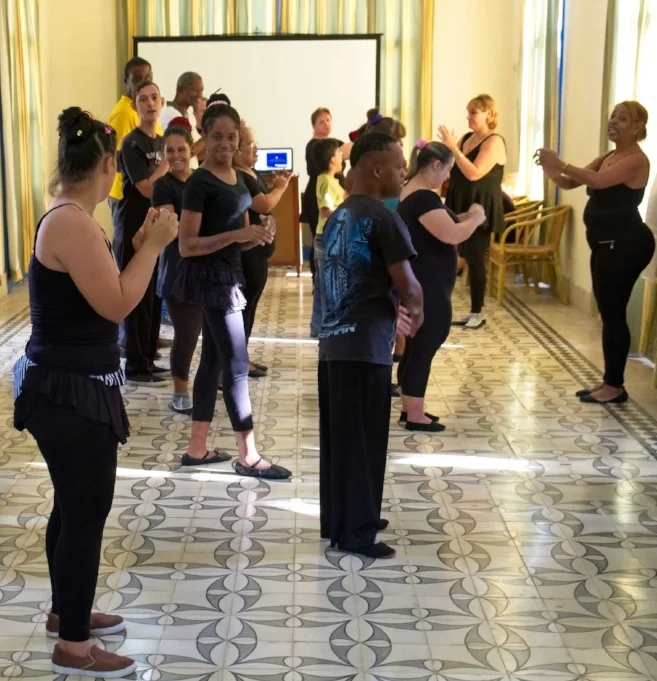The Children of Quinta de Molinos of Havana
The special needs children of Quinta de Molinos program in Havana slowly raise one arm, with the other extended, and then, when given the word from their instructor, lift the second arm above their heads. When one of the girls happens to catches the gaze of a bystander, her face blossoms into a sudden smile. Other than that, the children are silent, intensely focused on their ballet lesson.
The children finish their ballet lesson/photo by Greg Rothschild Photography
And then it is over. The instructor finishes the class, and the kids relax and gather around their American guests. There are smiles, greetings and a flurry of questions and answers through a translator. The ballet, one of the administrators explains, has improved their posture, grace, dexterity, and physical strength. What began as a once-a-week form of physical therapy has expanded to three times a week, and the children have begun to perform in public recitals.
Much like the Big and Loud program has benefited those with Parkinson’s disease, the children's ballet has given the students grace, focus, and a new sense of accomplishment. They have an artistic purpose, and as a result have become calmer, friendlier and more confident. Even the caregivers offer that they are easier to manage: this is significant as most of the children struggle with a form of autism or Down’s syndrome.
The site of their classrooms is on the same grounds with the old (and currently closed) 19th-century mansion of the Spanish colonial governors, the liberator rebel army, and the last residence of independence leader Máximo Gómez, who died in 1905. There are currently a national botanical collection, birds, butterflies, and the veterinary Spanky Project,
The goal of the Quinta children’s program is lofty: to continue with self-sufficiency programs which will teach the children basic self-care and life skills. But, along the way, there are more modest goals--lessons in knitting, a photography program, and other forms of creative expression that have benefits which include everything from physical therapy to pain management.
While the long-term effects of programs like ballet haven’t yet been fully realized, what once began as a form of exercise has now evolved into an art and testament to the power of socialization and inclusion for those who need it the most.
We are so proud of our young friends, their teachers, parents, and caregivers for making such a tremendous effort and their generosity in allowing us to be a part of that. With the deterioration of Cuban/American relations and Hurricane Irma, it has become harder for the children to receive some of the more practical items they need. Yet they smile...and they dance.


